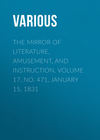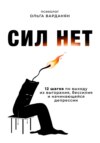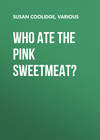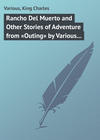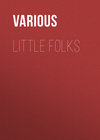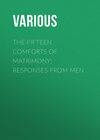Читать книгу: «The Mirror of Literature, Amusement, and Instruction. Volume 17, No. 471, January 15, 1831», страница 4
AUBERGE ON THE GRIMSEL
(For the Mirror.)
The Grimsel is one of the stupendous mountains of Switzerland, 5,220 feet in height, as marked on Keller's admirable map of that country. It is situated within the Canton of Berne, but bordering on that of the Valais, and not far from Uri. The auberge represented in the sketch, although not quite upon the very summit of the mountain, is almost above the limit of vegetation, and far remote from any other dwelling. Indeed, excepting a few chalets, used as summer shelter for the attendants upon the mountain cattle, but deserted in winter, there is no human habitation for many miles round; and it is one of the very few spots where the traveller has an opportunity of reposing for the night, under a comfortable roof, in so lofty a region of the atmosphere, amidst scenes of Alpine desolation—or rather, the primitive elements of Nature, "the naked bones of the earth waiting to be clothed."
The proprietor of this simple, but agreeable, auberge, is what Jeannie Deans called her father, "a man of substance," and amongst other sources of wealth possesses about three hundred goats, which contrive to pick up their living from the scanty verdure of the surrounding hills. Three times a-day they regularly assemble in front of the auberge to be milked, affording the raw material for a considerable manufacture of cheese. While we were lounging about before dinner, admiring the beautiful shapes of the rocky peaks, which even in the beginning of September were blanched with the previous night's snow, we were pleasantly surprised by the sound of a cheerful bleating, which was echoed on every side; and one after another the graceful creatures, as small and playful as our kids, popped up amongst the fragments of rocks from all quarters until the "gathering" was complete, and our meal was enlivened by the treble of their voices as the milking proceeded. When the operation was over, off they scampered again, "the hills before them were to choose"—again to return in due season with their bounteous store for the benefit of man. "This is not solitude." The milk is rich, but tastes rather too strong of the goat to be agreeable to every one at first, although probably we should soon have thought cow's milk comparatively insipid. On the day's journey we had seen some of these goats at a considerable distance from the auberge, and a young man who carried our luggage, after giving chase to several, at length caught one, and in spite of her remonstrances, milked her by main force into the cup of a pocket flask, that we might enjoy a draught of the beverage. Still holding the animal, he then filled the vessel more than once for himself, and it was amusing to see the gusto with which he drank it off. We afterwards had the milk with coffee; indeed both here and on the Righi it was "Hobson's choice," goat's milk or none at all.
This auberge has been built on the Grimsel of late years for the accommodation of travellers across the mountain passes; and it forms a convenient night's resting place in a two day's journey on foot or horseback (the only modes of threading these Alpine paths) between the valley of Meyringen and that of Urseren. It may be useful briefly to notice this route, in which the traveller will be charmed with a succession of scenery on Nature's grandest scale. After leaving Meyringen and its beautiful valley, called the Vale of Hasli, he looks down from the top of a mountain pass upon a small compact, oval-shaped valley, named, we believe Hasligrund, into which he descends, and then climbs the mountains on the opposite side. Proceeding onward, he reaches a small place, Handek, formed of a few wood chalets, and giving its name to one of the finest waterfalls in Switzerland. The accessories of the sublimest scenery give additional interest to the beauty of the fall, at which our traveller will feel inclined to linger; he should endeavour to be there about noon, when the sun irradiates the spray like dancing rainbows. The rest of the day's route is, in general, ascending, and partly across splendid sweeps of bare granite, until his eyes are gladdened with the sight of the auberge.
On the second morning he crosses the remaining summit of the mountain, and rises to cross the Furca, passing beside the Glacier of the Rhone; perhaps the finest in all the Alps, which looks like a vast torrent suddenly frozen in its course while tossing its waves into the most fantastic forms. The traveller afterwards descends into the Valley of Urseren, which extends straight before him for the distance of perhaps twelve miles, with the Reuss winding through it, and the neat town of Andermatt shining out from the opposite extremity. He passes through the singular village of Realp, where he may refresh himself with a draught of delicious Italian red wine, and afterwards arrives at the little bleak town of Hospital, situated at the foot of the St. Gothard, over which a new carriage-road into Italy has lately been made, with galleries winding up the mountain as far as the eye can reach. He may either take up his quarters for the night at Hospital, or proceed about a mile farther to Andermatt, where the road turns off at right angles, and where he may hire a car, if he wishes to go on the same evening across the romantic Devil's Bridge to Amstag, a pretty village in the bend of the splendid valley of the Reuss, whence the road leads on to Altorf and Fluellen, on the bank of the lake of the Four Cantons, the scene of the heroic exploits of William Tell.
Connecting the above sketch with one of the Fall of the Staubbach, in the Valley of Lauterbrun, in a former Mirror, (No. 403,) we may add, that the distance between the latter and Meyringen may also be performed in two days, amidst scenes, if possible, of sublimer character than the journey now described. From Lauterbrun across the Wengern Alp to the Valley of Grindenwald is the first day, the route passing in front of the Jungfrau, which throws up its magnificent ice-covered summits with more enchanting effect than the imagination can conceive. From Grindenwald, with its two fine glaciers, the path proceeds across the great Sheidech, by the baths of Rosenlaui, one of the most beautiful spots on this beautiful earth; and by the fall or rather falls, of the Rippenbach, (for there are no less than eleven in succession beneath each other,) to Meyringen.
We have thus pointed attention to a journey of four days, comprising the chief points in the Oberland, or Highlands, through this region of romantic wonders.
W.G
THE SELECTOR; AND LITERARY NOTICES OF NEW WORKS
THE EMPEROR'S ROUT
Who does not remember the Butterfly's Ball and the Grasshopper's Feast in the halcyon days of their childhood? These toyful trifles, "light as air," doubtless suggested the Emperor's Rout. Do not start, expectant reader; this is no downfall of a royal dynasty, no burning of palaces, or muster of rebel ranks—no scamper "all on the road from Moscow"—or sauve qui peut at Waterloo; but a pleasant, little verse tale of the Emperor Moth inviting the haut ton of the Moths to a splendid rout—with notes intended as a tempting introduction to the fascinating study of entomology.
There are four Engravings: 1.—The Invitation, with the Emperor and the Empress, and the Buff-tip Moth writing the Cards.—2. The Dance, with the Sphinx Hippophaës, the Pease Blossom, the Mouse, the Seraph, Satellite, Magpie, Gold Spangle, Foresters, Cleap Wings, &c.—3. The Alarm.—4. The Death's Head Moth. These are beautifully lithographed by Gauci. Their colouring, after Nature, is delightfully executed: the finish, too, of the gold-spangle is good, and the winged brilliancy of the company are exquisite pieces of pains-taking—sparkling as they are beneath a trellis-work rotunda, garlanded with roses, and lit with a pine-pattern lustre of perfumed wax. What a close simile could we draw of life from these dozen dancing creatures in their rainbow hues—their holiday and every-day robes—flitting through life's summer, and then forgotten. Yet how fares it with us in the stream of life!
By the way, this trifle, though so prettily coloured, is in price what was once called "a trifle"—yet what kings and queens have often quarrelled for—half-a-crown.
SATAN IN SEARCH OF A WIFE
Is a little Poem, with much of the grotesque in its half-dozen Embellishments, and some tripping work in its lines. "The End," with "Who danced at the Wedding?" and the tail-piece—a devil-bantling, rocked by imps, and the cradle lit by torches—is droll enough.
Here is an invitation that promises a warm reception:
Merrily, merrily, ring the bells
From each Pandemonian steeple;
For the Devil hath gotten his beautiful bride,
And a Wedding Dinner he will provide,
To feast all kinds of people.

